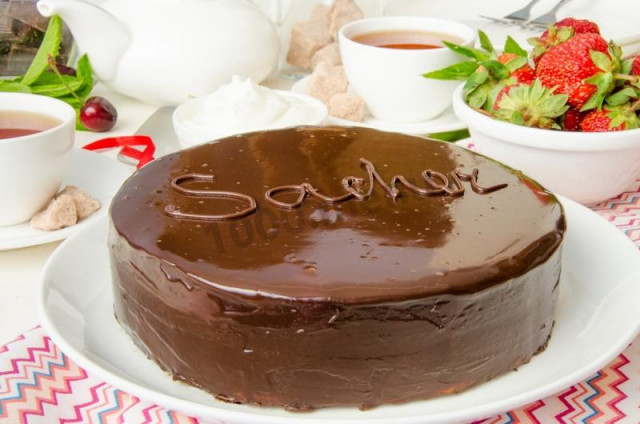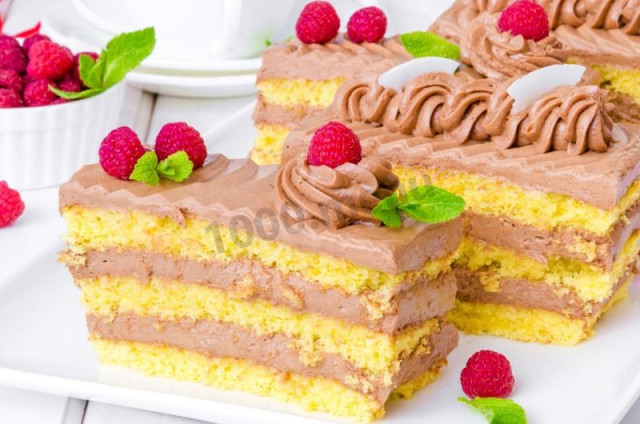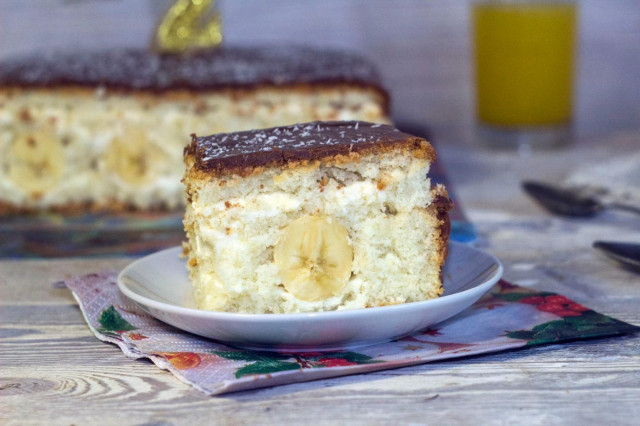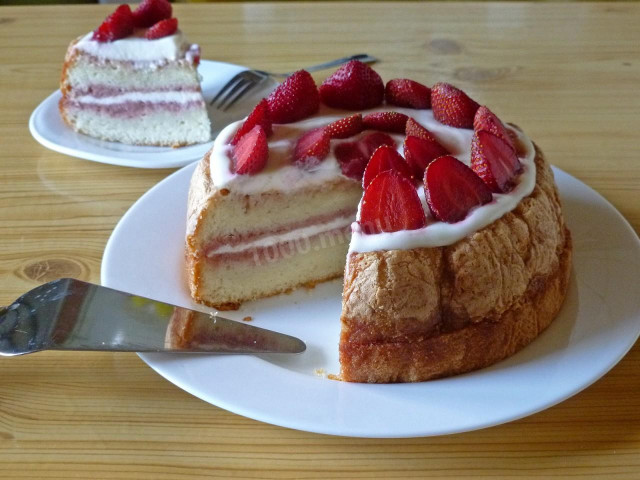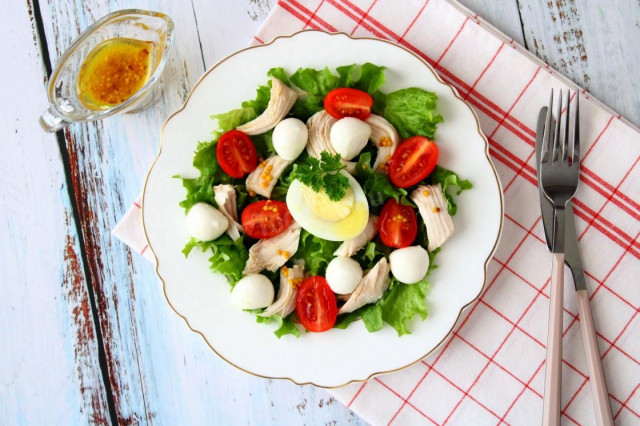Composition / ingredients
Step-by-step cooking
Step 1:

First of all, prepare the baking dish. The bottom of the mold with a diameter of 22 cm is lined with baking paper, the sides of the mold are greased with butter and lightly sprinkled with flour. The excess flour must be shaken off.
Step 2:
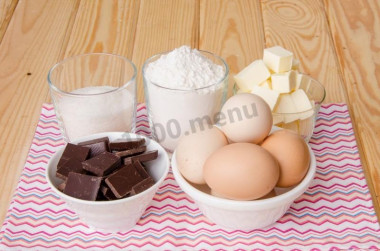
Now let's do the biscuit. For its preparation, we take butter, bitter chocolate (at least 56% cocoa, and preferably 72%), sugar, eggs and flour.
Step 3:

Break the chocolate into small pieces or chop it with a knife and put it in a bowl. Add the diced butter to the chocolate. We put the bowl in the microwave or in a steam bath and melt the chocolate with butter.
Step 4:

Chocolate is a capricious thing, it should never be overheated, so be careful, especially if you heat it in the microwave. Warm up the chocolate for 10-20 seconds, each time taking out a bowl and mixing thoroughly. The resulting chocolate glaze is set aside and let it cool.
Step 5:

While the chocolate is cooling, we divide the eggs into whites and yolks. It is very important that not a drop of yolk gets into the whites, so be careful! Add half of the sugar to the egg yolks.
Step 6:
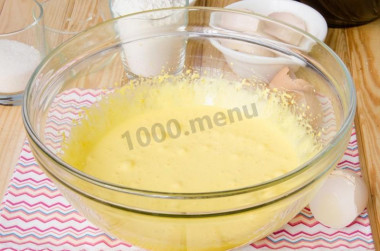
And beat them with a mixer for 7-8 minutes until very fluffy and dense.
Step 7:
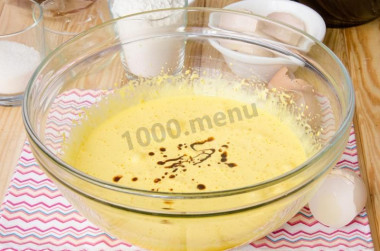
Add the already cooled chocolate glaze to the yolk mass.
Step 8:
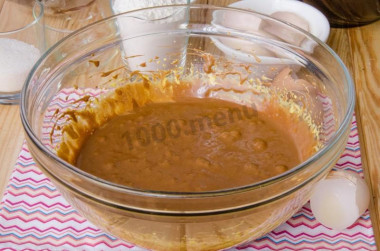
And beat the mass again with a mixer for 1 minute until smooth.
Step 9:
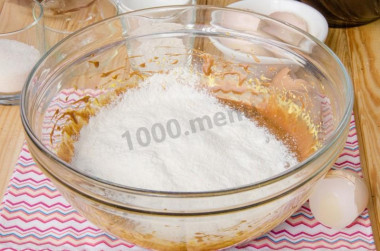
Sift the flour and add it to the bowl.
Step 10:

With a spatula or whisk, mix the dough until it is completely homogeneous and smooth.
Step 11:

Whisk the proteins first independently until light and fluffy foam.
Step 12:

Then, without stopping whipping, pour in the remaining half of the sugar in small portions. After all the sugar has been added, whisk the proteins until solid peaks and the sugar is completely dissolved.
Step 13:
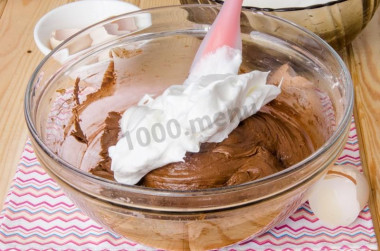
In small portions, we introduce proteins into the dough.
Step 14:
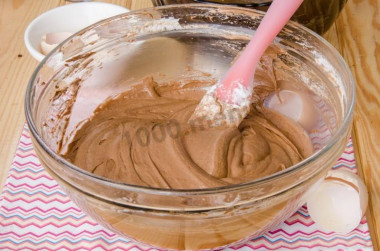
Mix the dough gently with folding movements. We act gently so that the proteins do not lose their volume.
Step 15:

We transfer the finished dough to the previously prepared form.
Step 16:
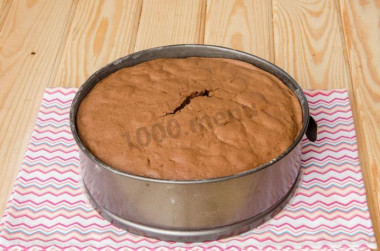
Bake the chocolate sponge cake in a preheated 180 C oven for about 45-50 minutes. The time may vary, it all depends on your oven. During baking, we do not open the oven door for the first 20-30 minutes, as the biscuit may fall off. We check the readiness of the biscuit with a wooden skewer. Let the finished biscuit cool completely and, if there is time, let it stand for 5-6 hours.
Step 17:
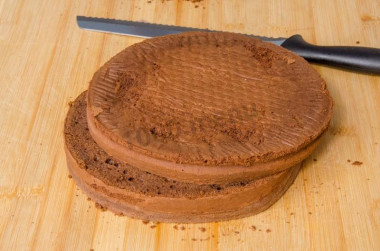
Cut the cooled biscuit into 2 parts.
Step 18:
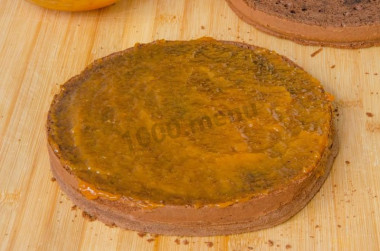
We apply half (or a little more) of apricot jam to one part of the biscuit in an even layer. If the jam is very thick, then preheat it slightly in the microwave so that it becomes more liquid.
Step 19:
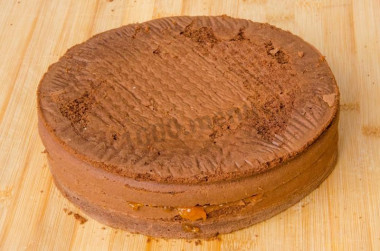
Spread the other half of the biscuit on top with the flat side up.
Step 20:
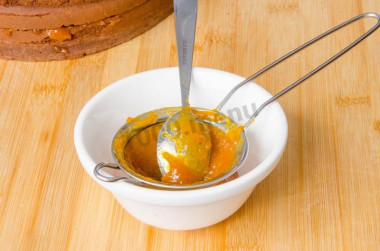
Rub the remaining jam through a fine sieve so that it becomes homogeneous.
Step 21:
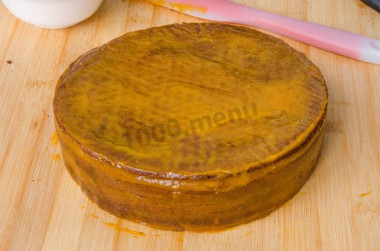
And coat the cake with it from all sides. In this form, we send the cake to the refrigerator for 20-30 minutes so that the apricot layer freezes.
Step 22:
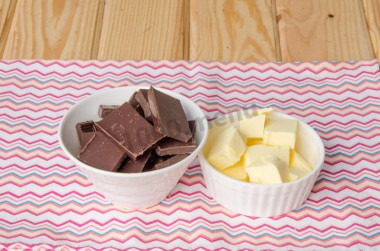
Prepare the glaze.
Step 23:

Break the chocolate into pieces and mix with butter.
Step 24:
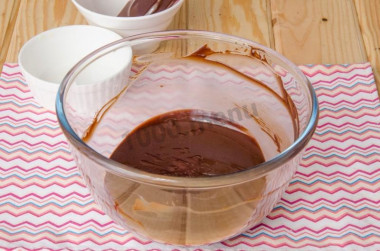
Melt it in the microwave or in a steam bath.
Step 25:
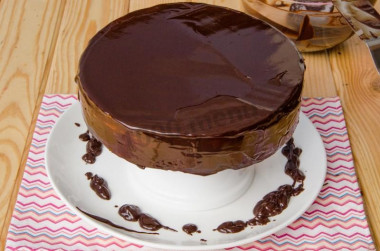
When the apricot layer hardens, you can cover the cake with icing. To do this, we put the cake on the grill or build a structure like mine. Pour the icing on top of the cake and level it with a spatula.
Step 26:
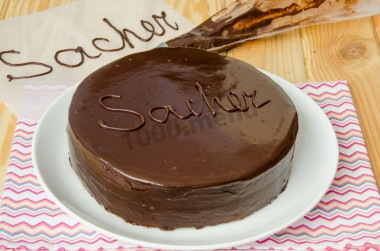
Traditionally, the Sacher cake is decorated with a simple inscription. Therefore, we pour the remains of the glaze into a pastry bag with a narrow (1-2 mm) nozzle or into a paper cornetik and apply the inscription.
Step 27:
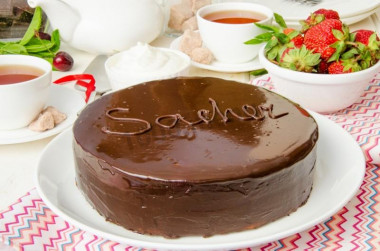
That's it! Sacher Chocolate Cake is ready!
Step 28:
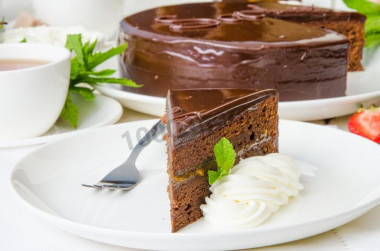
Traditionally it is served with whipped cream! I strongly advise you not to miss this moment, as the cream gives the cake a special tenderness. Bon appetit!
Be prepared for the fact that you may need more or less flour than indicated in the recipe. Focus not on the amount of flour, but on the desired consistency of the dough. Read a lot of useful information about flour and its properties in this article!
It is important to sift the flour to saturate it with oxygen. Then the baking will turn out to be airy and will rise well when baking.
Keep in mind that everyone's ovens are different. The temperature and cooking time may differ from those specified in the recipe. To make any baked dish successful, use the useful information in this article !
So that the oven has time to heat up to the desired temperature, turn it on in advance (10-20 minutes before the start of cooking).
Calorie content of the products possible in the dish
- Chicken egg - 157 kcal/100g
- Egg white - 45 kcal/100g
- Egg powder - 542 kcal/100g
- Egg yolk - 352 kcal/100g
- Ostrich egg - 118 kcal/100g
- Whole durum wheat flour fortified - 333 kcal/100g
- Whole durum wheat flour, universal - 364 kcal/100g
- Flour krupchatka - 348 kcal/100g
- Flour - 325 kcal/100g
- Granulated sugar - 398 kcal/100g
- Sugar - 398 kcal/100g
- Butter 82% - 734 kcal/100g
- Amateur unsalted butter - 709 kcal/100g
- Unsalted peasant butter - 661 kcal/100g
- Peasant salted butter - 652 kcal/100g
- Melted butter - 869 kcal/100g
- Apricot jam - 265 kcal/100g
- Pear jam - 268 kcal/100g
- Quince jam - 223 kcal/100g
- Apple jam - 265 kcal/100g
- Jam - 265 kcal/100g
- Bitter chocolate - 539 kcal/100g

